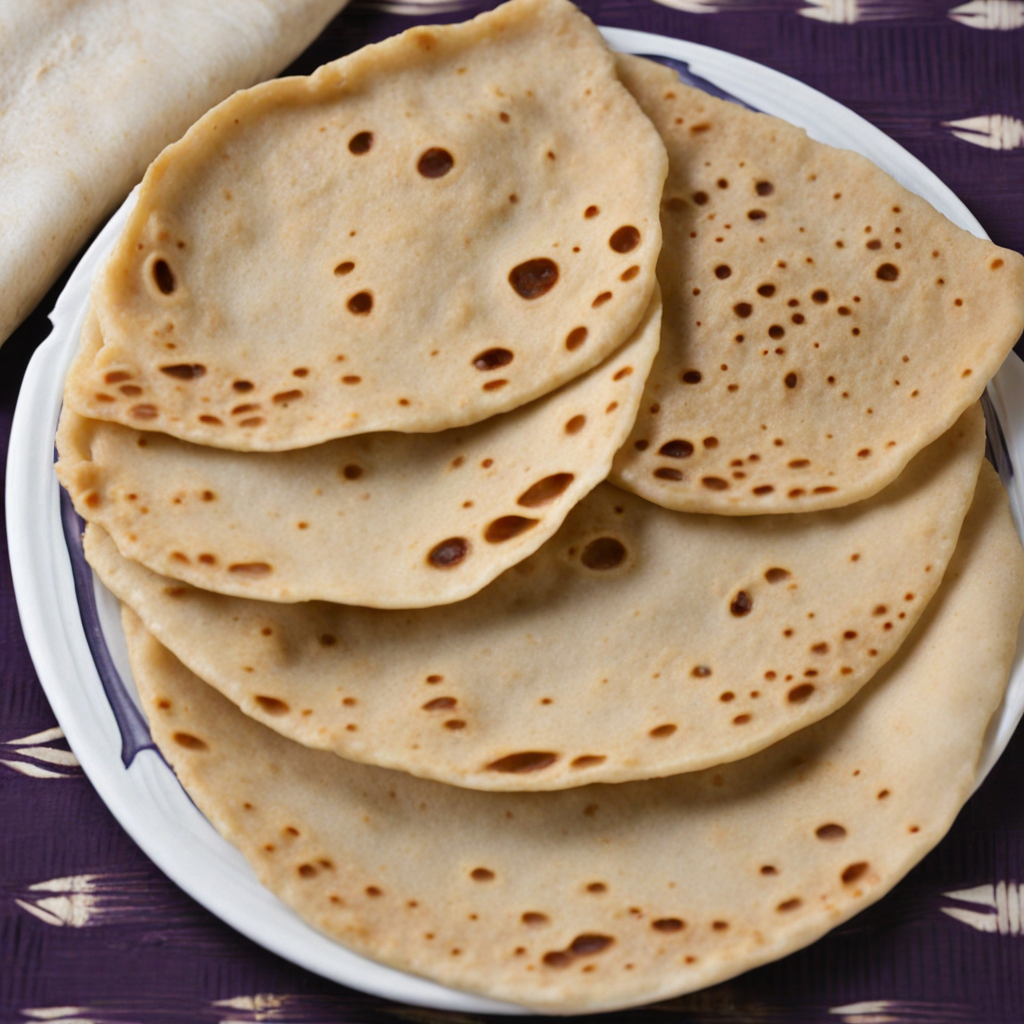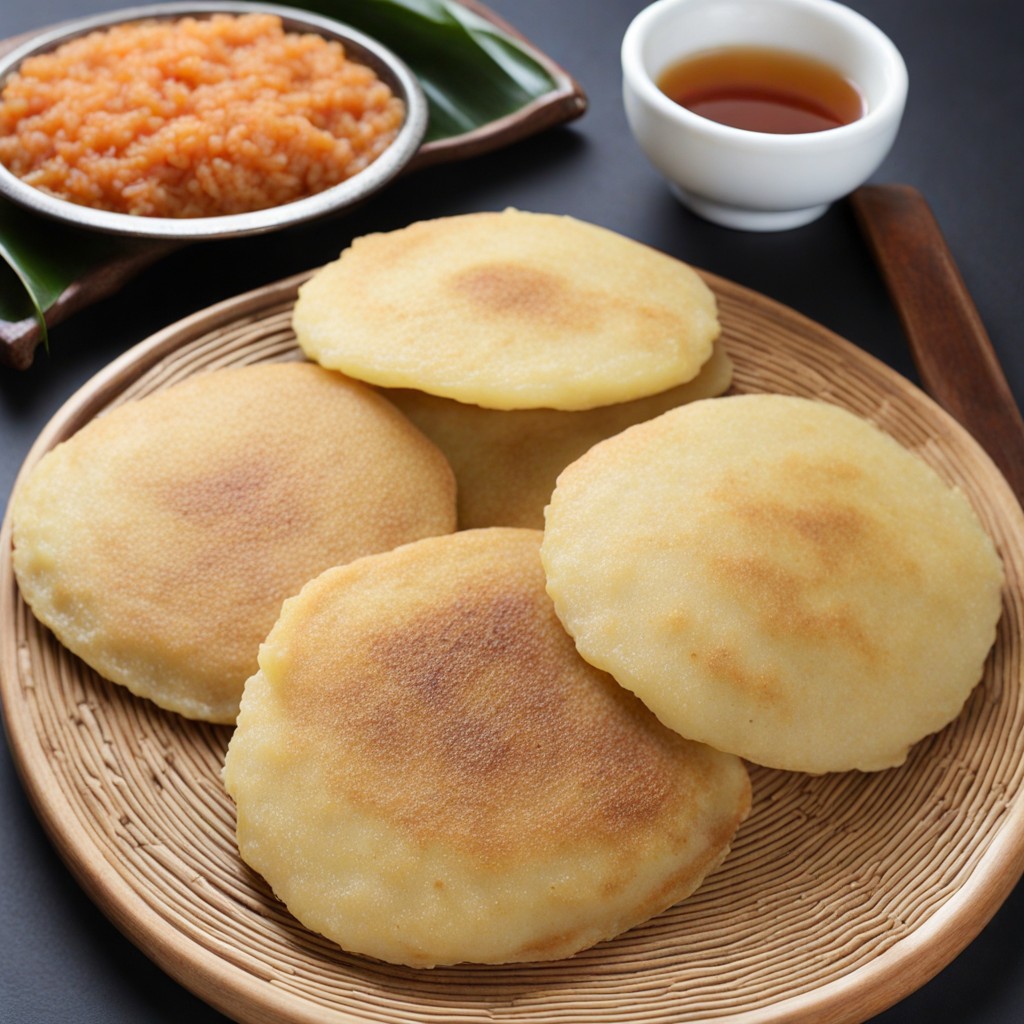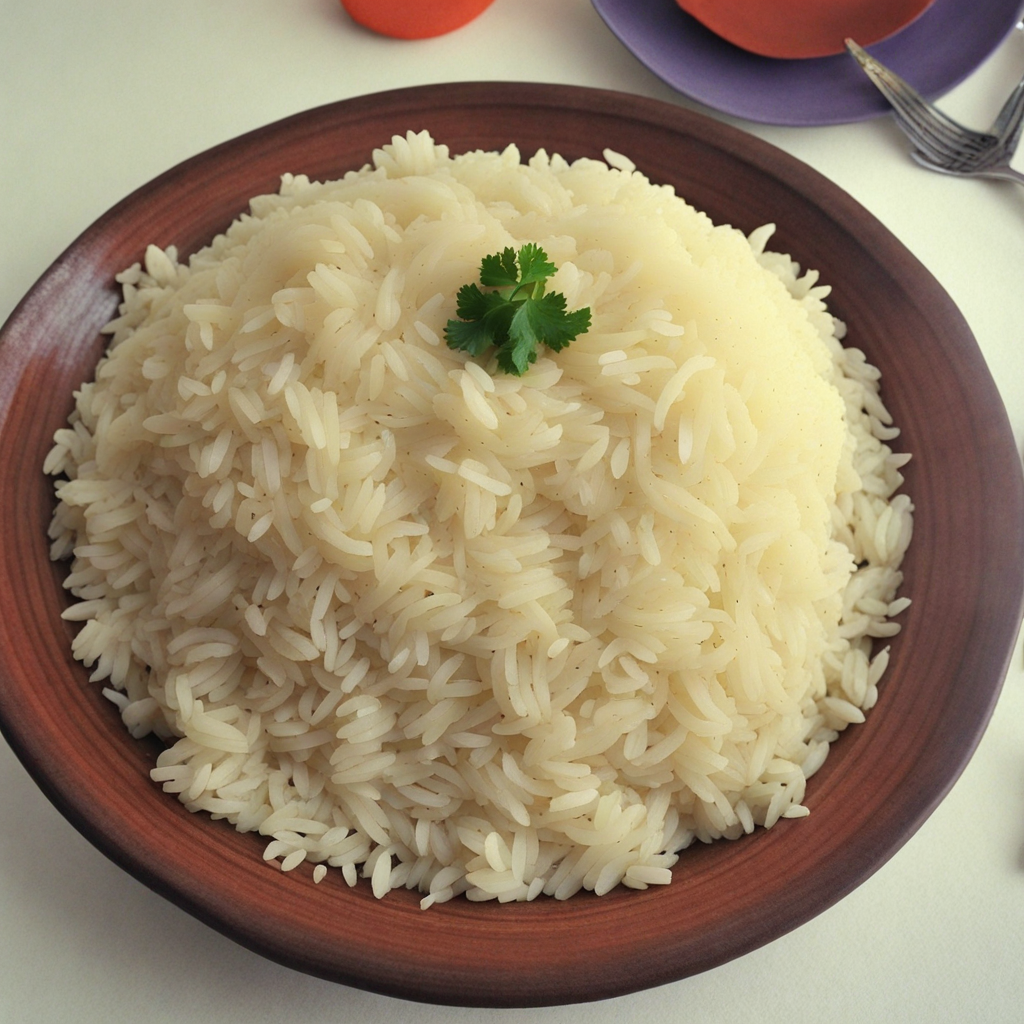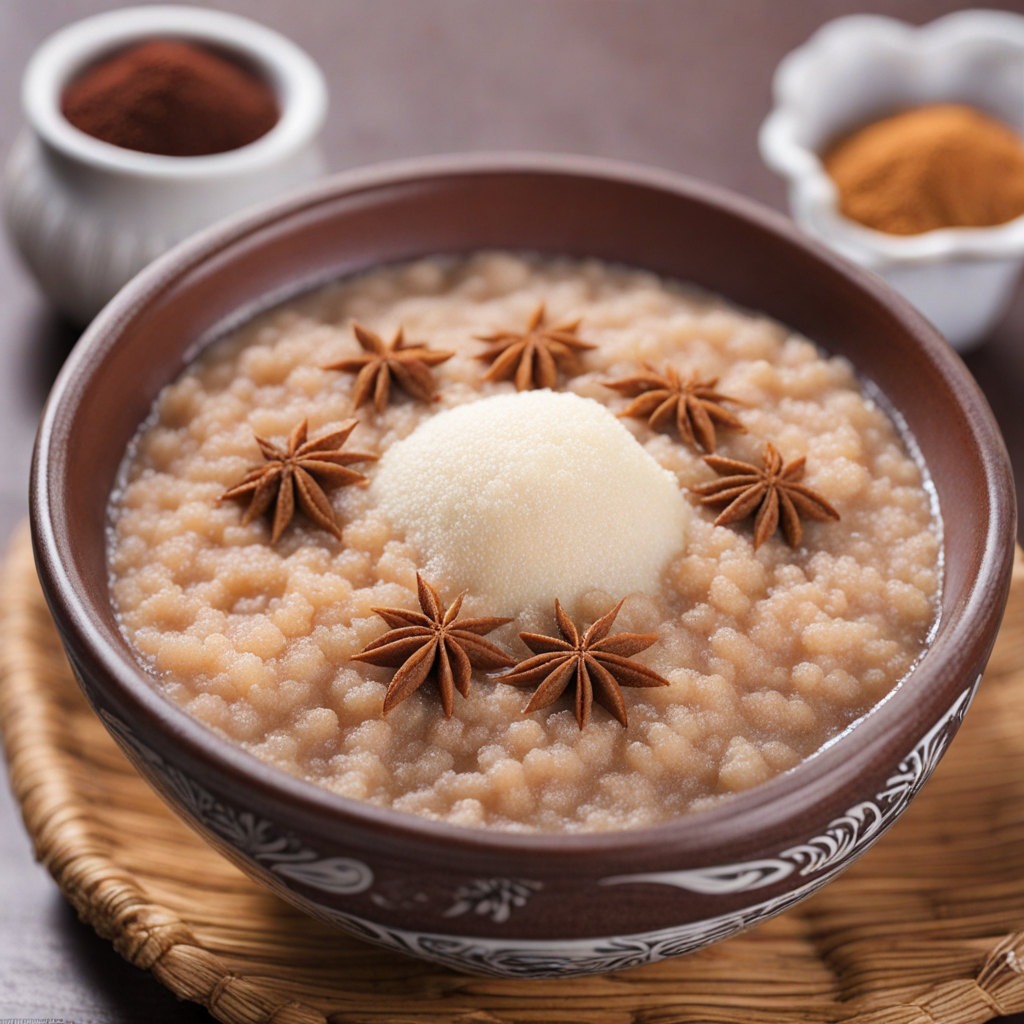Chapati
Chapati is a delightful unleavened flatbread that has become a beloved staple in Tanzanian cuisine. Made primarily from wheat flour, water, and a pinch of salt, the dough is kneaded until smooth and then rolled into thin circles. The magic happens when these circles are cooked on a hot griddle or skillet, where they puff up beautifully, creating a tender, slightly chewy texture. The golden-brown exterior, often flecked with darker spots, is a testament to the skillful cooking process that brings out the flavors of the simple ingredients. In Tanzania, chapati is more than just a side dish; it is a versatile accompaniment that complements a variety of flavorful dishes. It pairs wonderfully with rich curries, spicy stews, and vegetable dishes, soaking up the vibrant sauces and enhancing every bite. The bread's neutral flavor and satisfying texture provide a perfect balance to the bold spices and aromas typical of Tanzanian cuisine, making each meal a harmonious experience. Beyond its culinary role, chapati also carries a cultural significance, often enjoyed during festive occasions or shared among family and friends. The act of breaking bread together symbolizes unity and hospitality, making chapati not just a meal but a cherished part of Tanzanian social life. For anyone eager to explore new tastes, chapati offers an inviting introduction to the warmth and richness of Tanzanian flavors, promising a delightful experience for the palate.
How It Became This Dish
The History of Chapati in Tanzania #### Origin and Early Influences Chapati, a type of unleavened flatbread, has roots that extend far beyond Tanzania, tracing back to the Indian subcontinent. The word "chapati" itself is derived from the Hindi word "chapat," which means "to slap," a method traditionally used to shape the dough. While chapati has been a staple in India for centuries, its presence in East Africa, particularly Tanzania, can be attributed to a complex interplay of trade, colonization, and migration. The introduction of chapati to Tanzania is closely linked to the arrival of Indian traders and laborers in the late 19th century. The British colonial rule spurred the movement of people across the Indian Ocean, leading to significant Indian communities establishing roots in East Africa, especially along the coastal regions and in cities like Dar es Salaam, Zanzibar, and Mombasa. These traders brought with them not only their goods but also their culinary traditions. #### Cultural Significance In Tanzania, chapati has transcended its origins and become more than just a bread; it is a symbol of cultural fusion and adaptation. It is commonly enjoyed across various communities, regardless of ethnic or religious backgrounds. The Indian influence is evident, but over time, chapati has been integrated into local culinary practices, taking on unique characteristics that reflect Tanzanian flavors and customs. One of the most significant aspects of chapati in Tanzanian culture is its role in communal and family gatherings. It is often served during special occasions, such as weddings, religious festivals, and family celebrations. The bread is typically accompanied by a variety of dishes, including stews made from meat, beans, or vegetables, highlighting its versatility. This communal aspect of dining reinforces social ties and fosters a sense of belonging within families and communities. Moreover, chapati is a staple in everyday life, often enjoyed as a quick and satisfying meal. Street vendors across Tanzanian cities offer chapati with an array of fillings and toppings, making it accessible to people from all walks of life. This availability and adaptability have solidified chapati’s status as a beloved comfort food. #### Development Over Time As chapati settled into Tanzanian cuisine, its preparation methods and ingredients began to evolve. Traditionally made from whole wheat flour (atta), water, and salt, the dough is rolled out into thin discs and cooked on a hot griddle or flat surface, known as a tava. In Tanzania, variations have emerged, with some incorporating local grains like maize or cassava flour. This adaptation reflects the agricultural practices and available resources within the region. The method of cooking chapati has also diversified over time. While the classic method involves cooking on a flat surface, some regions have adopted the practice of frying chapati in oil or ghee, resulting in a richer flavor and a slightly crispy texture. This adaptation has made chapati not only a healthier option but also a more indulgent one, appealing to a wider audience. The seasoning of chapati has also seen variations, with some recipes incorporating spices such as cumin or coriander, reflecting the broader culinary traditions of Tanzania. These spices not only enhance the flavor but also connect chapati to the rich tapestry of East African cooking, which often emphasizes bold flavors and aromatic ingredients. #### Chapati and Modern Tanzanian Identity In contemporary Tanzania, chapati continues to evolve, influenced by globalization and changing dietary preferences. The increasing availability of international ingredients and culinary techniques has led to the emergence of fusion dishes that incorporate chapati. For instance, chapati burritos and wraps have gained popularity, blending traditional Tanzanian fillings with global culinary trends. Furthermore, chapati has found its way into modern restaurants and cafes, often featured on menus that celebrate the fusion of traditional and contemporary cuisine. Chefs are experimenting with innovative fillings and accompaniments, reflecting the dynamic nature of Tanzanian food culture. This evolution showcases chapati’s ability to adapt and thrive in a changing culinary landscape. The growth of urbanization in Tanzania has also played a role in the transformation of chapati. As more people move to cities, the demand for quick, affordable, and delicious meals has increased. Chapati stands and food stalls have proliferated in urban areas, serving as vital sources of nourishment for busy city dwellers. These establishments often act as social hubs, where people gather to share meals and engage in conversation, further enhancing chapati's status as a unifying food. #### Conclusion The history of chapati in Tanzania is a compelling narrative of cultural exchange, adaptation, and resilience. From its origins in the Indian subcontinent to its establishment as a beloved staple in Tanzanian cuisine, chapati has become a symbol of the rich tapestry of influences that shape the country’s culinary identity. It embodies the spirit of community, celebration, and the enduring connections forged through food. As Tanzania continues to evolve and modernize, chapati remains a steadfast presence on tables across the nation, evolving with the times while retaining its fundamental essence. Whether enjoyed at a lavish wedding feast, a bustling street vendor, or a quiet family dinner, chapati is more than just bread; it is a testament to the shared history, cultural significance, and unifying power of food in Tanzania.
You may like
Discover local flavors from Tanzania







